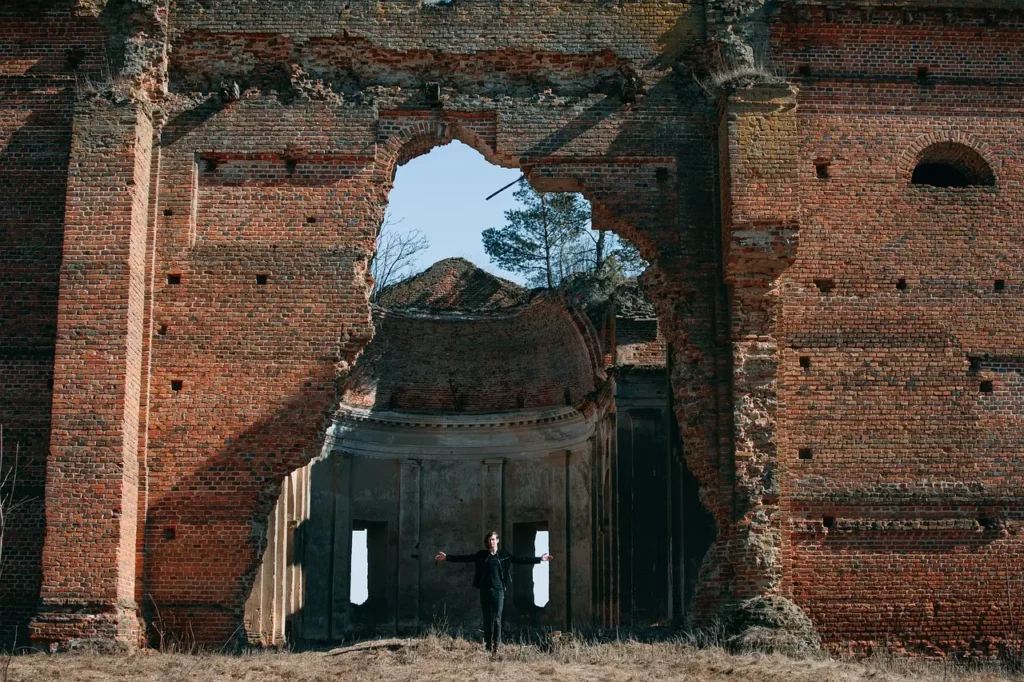Local historical sites are the hidden gems that tell the story of your new hometown. Dive into the past and discover the rich heritage right around the corner. Whether you’re a history buff or just looking for a unique weekend activity, exploring these sites can be both educational and fun. Ready to embark on a historical adventure? Let’s get started!
The Allure of Local Historical Sites
Local historical sites hold a unique charm, offering glimpses into the past and a deeper understanding of a region’s heritage. These sites are often the backbone of a community’s history, preserving stories and artifacts that span generations. From ancient ruins to colonial landmarks, each site provides a window into the events and people that shaped the area.
Real-life Example
Imagine visiting the old fort in your city, where soldiers once stood guard and battles were fought. Walking through its ancient halls, you can almost hear the echoes of the past and visualize the events that took place centuries ago.
Benefits of Exploring Local Historical Sites
- Educational Value: Learning about history through physical sites and artifacts can be more impactful than reading from a book.
- Cultural Appreciation: Understanding the history of a place fosters a deeper connection and appreciation for its culture.
- Community Engagement: Visiting local sites can enhance your sense of community and belonging.
- Recreational Enjoyment: Exploring historical sites is a fun and enriching way to spend your free time.
Types of Local Historical Sites
Ancient Ruins
Ancient ruins offer a tangible connection to civilizations long gone. They provide insights into the architectural and cultural practices of ancient peoples.
Colonial Landmarks
Colonial landmarks, such as old forts, mansions, and government buildings, reveal the history of colonial eras and their impact on modern society.
Museums
Museums serve as repositories of history, art, and culture. They curate collections that tell the story of human achievement and societal development.
Exploring Ancient Ruins
Ancient ruins are like stepping stones to the past. They offer a glimpse into the lives of people who lived centuries or even millennia ago. These sites often include remnants of buildings, tools, and other artifacts that shed light on ancient civilizations.
Real-life Example
Think of the ancient Roman ruins you might find scattered across Europe. Walking through these ruins, you can see the grandeur of ancient architecture and imagine the bustling life that once filled these spaces.
Visiting Colonial Landmarks
Colonial landmarks are windows into the more recent past, often reflecting the history of exploration, settlement, and early governance. These sites can include forts, estates, churches, and other buildings from the colonial period.
Real-life Example
Consider visiting a colonial-era fort in the United States. Standing on the battlements, you can envision the early settlers defending their new home and the complex interactions between colonists and indigenous peoples.
Discovering Museums
Museums are treasure troves of knowledge and artifacts. They carefully curate collections that educate and inspire visitors about various aspects of history, art, science, and culture. Museums often host interactive exhibits and events that make learning engaging and fun.
Real-life Example
Imagine spending an afternoon in the British Museum in London. You could explore exhibits ranging from Egyptian mummies to Greek sculptures, each telling a unique story about human history and creativity.
Tips for Exploring Local Historical Sites
Do Your Research
Before visiting a site, do some research to understand its historical significance and what you can expect to see. This will enhance your experience and appreciation of the site.
Take Guided Tours
Many historical sites offer guided tours led by knowledgeable guides who can provide in-depth information and interesting anecdotes. These tours often reveal details you might miss on your own.
Respect the Site
Historical sites are fragile and irreplaceable. Follow any rules or guidelines provided to help preserve these sites for future generations.
Engage with Interactive Exhibits
Many museums and historical sites offer interactive exhibits or activities. Participate in these to gain a deeper understanding and make your visit more enjoyable.
The Role of Local Historical Sites in Education
Local historical sites play a crucial role in education by providing real-world contexts to historical events. Schools and universities often use these sites as extensions of the classroom, offering students immersive learning experiences.
Field Trips and Educational Programs
Field trips to historical sites allow students to engage with history in a hands-on manner. Educational programs and workshops offered at these sites can further enrich students’ understanding.
Community Events and Reenactments
Many historical sites host community events and historical reenactments, bringing history to life. These events can include everything from colonial fairs to battle reenactments, offering participants a vivid glimpse into the past.
Real-life Example
Picture attending a Civil War reenactment at a local battlefield. Seeing actors in period costume and witnessing a reenactment of a battle provides a powerful and immersive historical lesson.
The Impact of Historical Sites on Local Tourism
Local historical sites can significantly boost tourism, attracting visitors from near and far. This influx of tourists can have positive economic impacts on the community, including job creation and increased revenue for local businesses.
Promoting Historical Tourism
Communities can promote historical tourism by developing marketing campaigns, improving site accessibility, and offering engaging visitor experiences. Collaborating with travel bloggers and influencers can also help raise awareness and attract visitors.
Preservation and Conservation Efforts
Preserving local historical sites is vital for maintaining their integrity and ensuring that future generations can enjoy and learn from them. Conservation efforts often involve both public and private funding, as well as volunteer support.
Getting Involved
Community members can get involved in preservation efforts by volunteering, donating, or advocating for historical preservation. Local organizations often offer opportunities to contribute to the upkeep and promotion of historical sites.
Final Thoughts
Exploring local historical sites and museums offers a unique and enriching way to connect with the past. Whether you’re wandering through ancient ruins, touring a colonial mansion, or marveling at museum exhibits, each experience deepens your understanding of history and culture. So, next time you’re looking for an adventure, consider visiting a local historical site. You might just find yourself transported to another time.
FAQs
What Are Local Historical Sites?
Local historical sites are places of historical significance within a community. These can include ancient ruins, colonial landmarks, museums, and other locations that preserve and showcase the history and culture of an area.
Why Should I Visit Local Historical Sites?
Visiting local historical sites offers educational value, cultural appreciation, community engagement, and recreational enjoyment. It’s a great way to learn about the history of your area and connect with its heritage.
How Can I Find Local Historical Sites Near Me?
You can find local historical sites by researching online, visiting local tourism websites, or asking for recommendations from community members and local historical societies.
What Should I Bring When Visiting a Historical Site?
Bring comfortable walking shoes, a camera, a notebook for taking notes, and any relevant information or guides about the site. It’s also a good idea to bring water and snacks, especially if you’ll be spending several hours exploring.
How Can I Support Local Historical Sites?
You can support local historical sites by visiting them, participating in tours and events, volunteering, donating, and advocating for their preservation. Many sites also have membership programs or gift shops, where proceeds go toward maintenance and conservation efforts.
Are There Guided Tours Available at Historical Sites?
Many historical sites offer guided tours led by knowledgeable guides. These tours can provide in-depth information and insights that enhance your understanding and appreciation of the site. Check the site’s website or contact them directly for tour availability and schedules.



